From his early childhood in England, Richard St. Barbe Baker was attracted to gardening, botany, and forestry. He would run among his family’s trees, saluting them as if they were toy soldiers.
Later, as a young man awaiting the start of his university classes in 1912, he took a job as a logger where he lived in Saskatchewan, Canada. He could no longer treat the trees as his friends.
“This area had been virgin forest and one evening, as I surveyed the mass of stricken trees littering the ground, I wondered what would happen when all these fine trees had gone,” St. Barbe wrote at the time. “The felling was wasteful, and I felt sick at heart.”
That experience would be a defining one for St. Barbe. He decided to study forestry at Cambridge University, beginning a lifetime dedicated to global reforestation. Afterward, he moved to British-ruled Kenya, where he set up a tree nursery. While there, he witnessed the effects of centuries of land mismanagement.
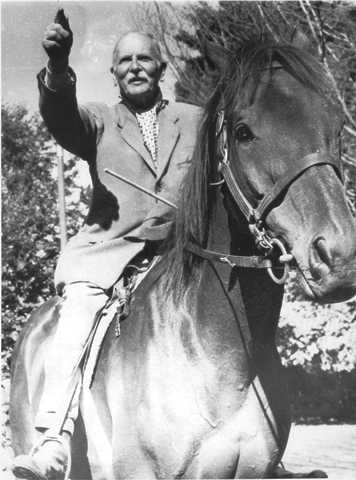
Richard St. Barbe Baker
Working as a colonial forester, St. Barbe was expected to employ top-down forest management practices. This went against the practices of the indigenous Kikuyu people, who used a traditional method of farming where they burned down trees to create rich soil. St. Barbe wanted to encourage a form of agriculture that promotes the growth of a forest conducive to farming, while also protecting the soil from erosion and respecting the culture and wisdom of the local population. The tribal leaders were not open to the planting of new trees, calling this “God’s business.”
To honor the traditions of the Kikuyu people and promote an awareness of their significant role in tree planting and conservation, St. Barbe looked to one of their long-held traditional practices—holding dances to commemorate significant moments. From this integration of cultural values and environmental stewardship was born the Dance of the Trees in 1922.
“So instead of trying to push them and force them into tree planting, he said let’s make this consistent with the culture. So he approached the elders there, discussed it with them and they had this Dance of the Trees which led to the formation of the Men of the Trees,” says Paul Hanley, the author of the new biography Man of the Trees: Richard St. Barbe Baker, the First Global Conservationist.
Along with the Men of the Trees’ co-founder, Chief Josiah Njonjo, St. Barbe developed a deeper understanding of the important ecological, social, and economic roles of trees in the life of humanity.
“Behind St. Barbe Baker’s prescience was his deep spiritual conviction about the unity of life,” Charles, the Prince of Wales, writes. “He had listened intently to the indigenous people with whom he worked.”
St. Barbe’s ventures into what is now called social forestry were looked upon with some skepticism. As a colonial forester, he was expected to protect forests that belonged to governments.
“He was extraordinary in that he broke through that,” says Paul Laird, programs manager for the International Tree Foundation. “He saw that fundamentally these forests belonged to the people of Kenya and you needed to work with the people to conserve the forests.”
This community-led approach remains core to the work of the International Tree Foundation.
“His caring nature for all life is something that really shines through,” says Andy Egan, the Foundation’s executive director.. “He very much helped to give birth to this idea that it wasn’t just a professional thing about planting trees. It was something that ordinary people in communities could and should be doing. In a way they’re in the best place to actually protect the forests … so their role should be very much recognized and supported and celebrated.”
In researching St. Barbe’s biography, Mr. Hanley discovered that the forester “was definitely very advanced in his thinking. And his whole philosophy of the integration and unity of human society, but also of the natural world, were fairly radical concepts at the time.”
When St. Barbe first encountered the teachings of Baha’u’llah in 1924, he found his ideas of nature and humanity confirmed. A Christian with a deep respect for indigenous religious traditions, St. Barbe recognized the truth in Baha’u’llah’s teachings about oneness—the oneness of religion, the oneness of humankind, and the interconnectedness of all life. The Faith’s writings also employ imagery from nature to help convey spiritual truths.
“I began to read some translations from the Persian,” St. Barbe wrote, reflecting on his pilgrimage to the Shrine of Baha’u’llah. “‘In the garden of thy heart plant naught but the rose of love.’ I was enthralled by the sublimity of the language. Here was beauty personified.”
In 1929, while on a mission to establish a branch of the Men of the Trees in the Holy Land, St. Barbe traveled to Haifa to visit Baha’i sacred sites. Pulling up in his car outside of the home of Shoghi Effendi, St. Barbe was surprised to see the Guardian of the Baha’i Faith coming out to welcome him and handing him an envelope. It contained a subscription to join the Men of the Trees, making Shoghi Effendi the organization’s first life member.
“He talks about the meeting with the Guardian as the most significant moment in his life, and it really … galvanized him,” says Mr. Hanley.
Through a continued correspondence, Shoghi Effendi encouraged St. Barbe’s efforts. For 12 consecutive years, he sent a message to the World Forestry Charter gatherings, another of St. Barbe’s initiatives, which were attended by ambassadors and dignitaries from scores of countries.
St. Barbe’s work took him to many countries. He was appointed Assistant Conservator of Forests for the southern provinces of Nigeria from 1925 to 1929. He also planned forests on Africa’s Gold Coast. In the United States, he launched a “Save The Redwoods” campaign, and worked with President Franklin D. Roosevelt to establish the American Civilian Conservation Corps which involved some six million young people. After World War II, St. Barbe launched the Green Front Against the Desert to promote reforestation worldwide. One expedition in 1952 and 1953 saw him trek 25,000 miles around the Sahara, leading to a project to reclaim the desert through strategic tree planting. In his late 80s, St. Barbe traveled to Iran to promote a tree planting program. He stopped in Shiraz, the birthplace of the Baha’i Faith, where he was asked to inspect an ailing citrus tree at the House of the Bab, a place of pilgrimage for Baha’is.
The Men of the Trees grew into the first international non-governmental organization working with the environment. By the late 1930s, it had 5,000 members in 108 countries, and its own journal for members, titled Trees.
“Originally it was created because it seemed that St. Barbe just got so many letters and invites and correspondence,” says Nicola Lee Doyle, who today compiles the annual journal. “He was telling people constantly where he was going to be and what he was going to be talking about. So they needed a way to just give everybody the information, and that’s how it started—but then it developed.”
Today, Trees is the world’s longest-running environmental journal.
Successive generations of environmentalists have credited St. Barbe as igniting their passion for their work.
“Sometimes it was the little things he did—like writing an article, or doing a radio interview—that would connect with some youth in some distant country,” says Mr. Hanley. “And several of these people went on to become very significant figures in the environment movement.”
“His legacy is probably related to the fact that he was indefatigable,” Mr. Hanley adds. “It was quite incredible—thousands of interviews, thousands of radio broadcasts, trying to alert people to this idea, and it really did have an impact on the lives of many people who have gone out and protected and planted trees.”
St. Barbe’s pioneering thinking can be particularly valuable now as humanity grapples with the challenges presented by climate change. Indeed, one of humanity’s most pressing challenges is how a growing, rapidly developing, and not yet united global population can live in harmony with the planet and its resources.
“It is now clear that had we heeded the warnings of St. Barbe Baker and other visionaries, we might have avoided a good deal of the environmental crises we face today,” Prince Charles writes. “Richard St. Barbe Baker’s message is as relevant today as it was ninety years ago and I very much hope that it will be heeded.”
Listen to a podcast about Richard St. Barbe Baker at news.bahai.org/podcast.


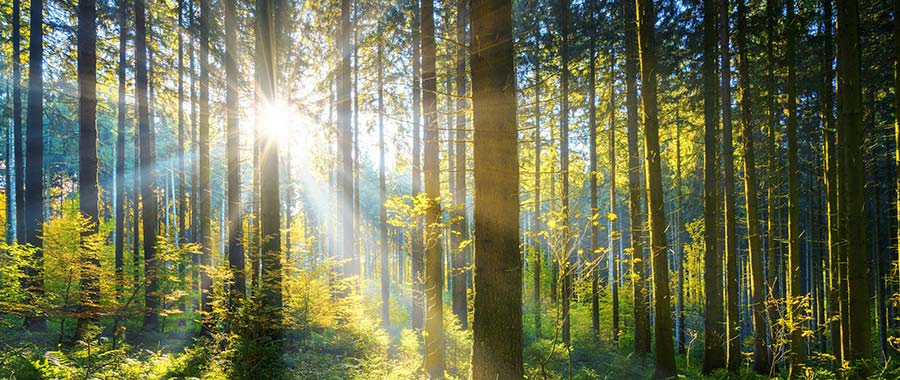


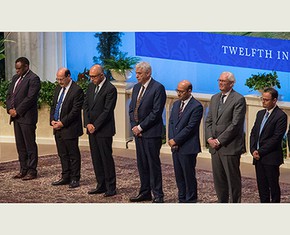





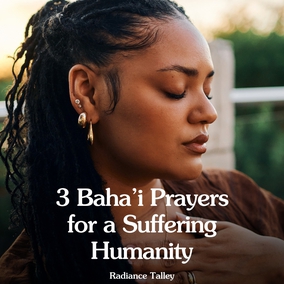

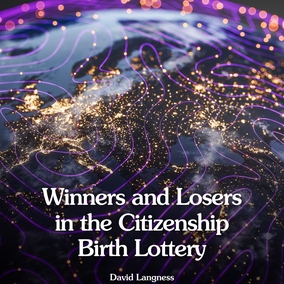


Comments
Sign in or create an account
Continue with Googleor